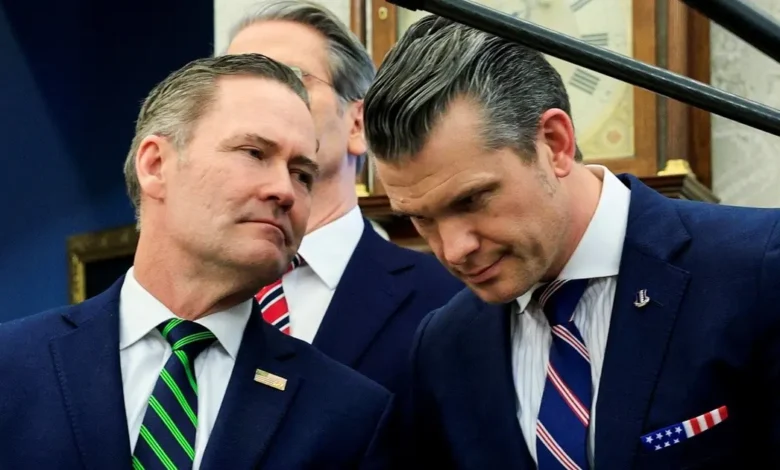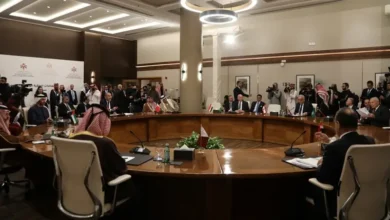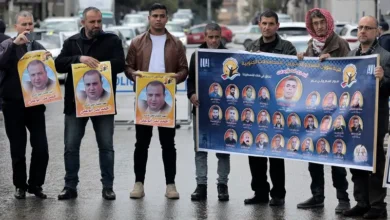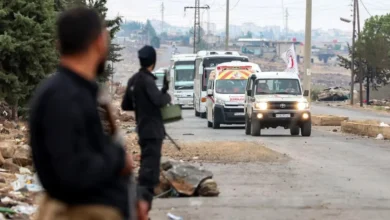Pentagon watchdog opens probe into use of Signal for Yemen attack plans

The Pentagon’s Inspector General’s office announced on Thursday it was opening a probe into Defense Secretary Pete Hegseth’s use of an unclassified commercial texting application to coordinate on the highly sensitive March 15 launch of US strikes on Yemen’s Houthis.
In a memorandum addressed to Hegseth, the Inspector General’s office said it would examine whether Hegseth’s use of Signal met Defense Department guidelines, including those related to classified information.
Hegseth has repeatedly said no classified information was revealed in the chat, even though it included precise times for the launch of US airstrikes and some targeting details that are regarded as closely guarded secrets ahead of a surprise military operation like the one in Yemen.
The details of the chat were revealed last week by The Atlantic magazine after its editor-in-chief, Jeffrey Goldberg, was included in the chat by mistake, in an embarrassing incident involving all of President Donald Trump’s most senior national security officials.
The case has also renewed scrutiny of Hegseth, who only narrowly won Senate confirmation after a bruising review that raised serious questions about his experience, temperament and views about women in combat.
“The objective of this evaluation is to determine the extent to which the Secretary of Defense and other DoD personnel complied with DoD policies and procedures for the use of a commercial messaging application for official business,” wrote Steven Stebbins, the acting Inspector General.
“Additionally, we will review compliance with classification and records retention requirements.”
Hegseth texted about plans to kill a Houthi militant leader in Yemen two hours before a military operation started and included precise details about when F-18 fighter jets, as well as sea-based cruise missiles, would launch.
‘Clean on OPSEC’
Hegseth’s text started with the title “TEAM UPDATE” and included these details, according to The Atlantic:
“TIME NOW (1144et): Weather is FAVORABLE. Just CONFIRMED w/CENTCOM we are a GO for mission launch”
“1215et: F-18s LAUNCH (1st strike package)”
“1345: ‘Trigger Based’ F-18 1st Strike Window Starts (Target Terrorist is @ his Known Location so SHOULD BE ON TIME – also, Strike Drones Launch (MQ-9s)”
“1410: More F-18s LAUNCH (2nd strike package)”
“1415: Strike Drones on Target (THIS IS WHEN THE FIRST BOMBS WILL DEFINITELY DROP, pending earlier ‘Trigger Based’ targets)”
“1536 F-18 2nd Strike Starts – also, first sea-based Tomahawks launched.”
Toward the end of the text chain, Hegseth said the mission was “clean on OPSEC,” an acronym for operational security, touting no leaks, even though the reporter was on the text chain.
If Houthi leaders knew a strike was coming, they might have been able to flee, possibly to crowded areas where targeting is more difficult and the number of potential civilian casualties might be deemed too high to proceed.
The top Democrat on the Senate’s Pentagon oversight committee, Jack Reed, said a leak could have put US pilots at risk.
“The potentially deadly consequences from Secretary’s Hegseth blunder are chilling,” Reed said in a statement.
“Had the intelligence in his chat messages been obtained by the Houthis or another adversary, it would have allowed them to reposition weapons to target our pilots with dangerously accurate intelligence.”
In a sign of the sensitivities, the US military’s Central Command has provided far fewer details to the public than usual about its ongoing operations in Yemen, including basic information like the number of strikes so far.
Asked about details on the campaign, which began on March 15, a defense official, providing a written response on condition of anonymity, told Reuters: “CENTCOM won’t provide details on strikes until the operation has concluded and there is no additional risk to US personnel or assets involved.”
Stebbins, the acting Inspector General, said the review would take place in Washington, D.C. as well as at Central Command headquarters in Tampa, Florida.
“We request that you designate two points of contact for this evaluation within 5 days,” he wrote in the memo, which was also addressed to Hegseth’s deputy, Steve Feinberg.
While it is rare for the Inspector General to investigate a US defense secretary, the office most recently probed Hegseth’s predecessor, President Joe Biden’s defense secretary, Lloyd Austin, over his secret hospitalization last year.
Stebbins became the acting Inspector General in January after Trump fired the previous head of the Defense Department’s independent watchdog and other agency watchdogs across the government during his first week in office.










